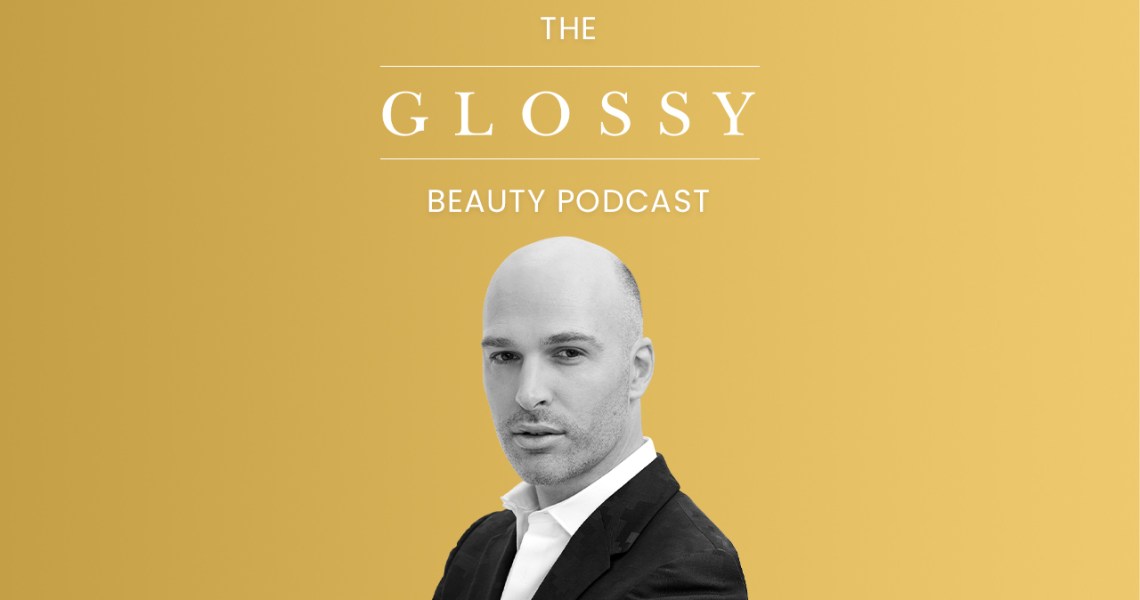Subscribe: Apple Podcasts | Stitcher | Google Play | Spotify
When Julien Bouzitat, AmorePacific chief marketing and digital officer, started working in marketing in 2000, his proposed path ahead looked very different from what he does today.
“In the early 2000s, it was actually trade marketing, working with retailers or distributors on promotions and displays, pricing, and a little bit of advertising. There was no social media, there were no influencers, there was not even e-commerce,” said Bouzitat on the most recent episode of the Glossy Beauty Podcast. “Not to date myself, but we were just at the very beginning of adding websites to present the brand or present the product. I would say 80% of what I do today did not exist, literally.”
After stints with L’Oréal, Bastide and Fresh, Bouzitat landed at AmorePacific’s Innisfree about five years ago, where he led the indie brand’s expansion from Korea to the U.S. In August 2020, he was appointed to his current role, where he oversees the conglomerate’s U.S. brands, Laneige, Innisfree, Sulwhasoo and AmorePacific. Like most beauty companies operating under the veil of Covid-19, the AmorePacific’s digital strategy has never been more important.
“When the pandemic hit back in March, we were actually finalizing all our re-platforming and optimization of our ecosystem, so we got kind of lucky. We were able to maximize that growth very quickly and, of course, change our investments and our programs to go digital-first,” he said.
But the right partnerships are still driving growth in the U.S. Case in point: the company’s partnership with Sephora for Laneige.
Ad position: web_incontent_pos1
Below are additional highlights from the conversation, which have been lightly edited for clarity.
The state of K-beauty
“K-beauty was really known [in 2012] as a hot phrase or hot name — to talk about the snail serum, the sheet mask, the sleeping packs. There was really no brand coming out of it; it was cute packaging, interesting ingredients or ingredients you’ve never really heard of, and a few interesting gestures like a sheet mask, like I mentioned. And then progressively, from cute, individual products you started to see an emergence of brands or experts to teach you why this came up. There were two things in parallel that happened. In the second phase, you had brands like AmorePacific brand, Innisfree, Laneige and Sulwhasoo that started to really invest in [the U.S.] and expand in the market with a certain level of success. And in parallel, what we do not have in AmorePacific is founder brands. We don’t have a spokesperson to embody the brand, like a Glow Recipe or Peach & Lily operation had, where you had an actual Korean women or American Korean women that can speak from a personal point of view about K-beauty, and adjust it and adapt it to the U.S. language and to the US market. Beyond K-beauty, our beauty brands that are successful today and founder brands that are successful today are through social media. Having someone that embodies that brand is also very important. I think with the bigger brands like us, we started to do the media investment and education, but there was also a second trend, which was more of those founder brands.”
Digital with an in-person touch
“When the pandemic hit back in March, we were actually finalizing all our re-platforming and optimization of our ecosystem, so we got kind of lucky. We were able to maximize that growth very quickly and change, of course, our investments and our programs to go digital-first. We saw a huge success there. That being said, we know very clearly from all the consumer feedback on social media and reviews that, in beauty, you still need to put your fingers in the goop, you still need to smell it, you still need to play with the texture and the formula. That’s not going to go away anytime soon. So of course, we need to be innovative and find ways to safely provide this opportunity of this formula discovery. We certainly are shifting a lot of our budget and activities toward sampling online or install[ing] sampling with sachets that are more appropriate at this point in time.”
Creating a personalized digital footprint for each brand
“I love having a portfolio of brands versus just one brand, at this point, because we can test and try different things and [have] a parallel path. Of course, all our brands are on Instagram, all our brands are on Facebook. But then, we’ve kind of decided that Laneige and Innisfree will be the guinea pigs to go heavy on TikTok, while Sulwhasoo and AmorePacific we actually try more on Pinterest. This is an area where that consumer is a bit more affluent, maybe slightly older and has a bit more time to think about a bigger investment like $150 cream, for instance.”
What is luxury?
“It’s getting more complex and more blurry by the day. And I think this is very consumer-centric. No longer is one consumer exclusive to one Chanel. People are shopping at Target and are shopping at Sephora, and are shopping on Amazon and shopping on brand.com directly. So having a broad, rich [path] is important. You need to find the right partners that give you that special relationship and that special visibility, because at the same time, there is an explosion of access, there’s an explosion of brands and an explosion of products. So I don’t think it’s wise for a brand to be everywhere and to be just in the background. The Laneige example at Sephora is the perfect best practice. Laneige officially broke the top-10 skin care brands at Sephora in 2020, which is a huge achievement, and that was done in less than three years. Because it was narrow and deep — focused, focused, focused — and an amazing partnership with Sephora, [we had] great opportunities.”




